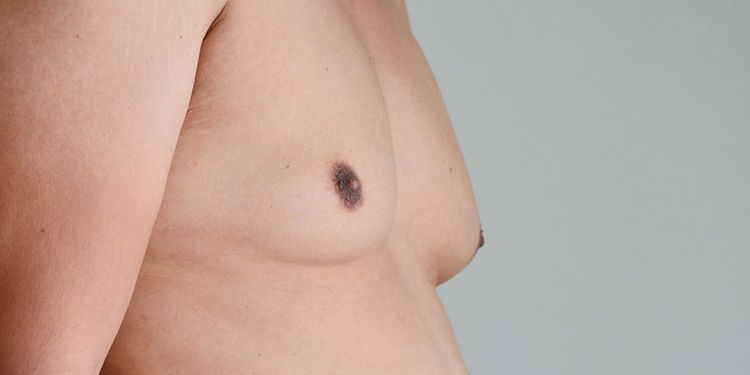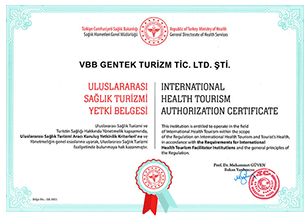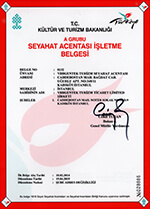Gynecomasty

Gynecomastia, i.e. abnormally increased breast size in males, can occur in infancy and old age and mostly during adolescence.
According to a study conducted in Turkey, the occurrence rate of gynecomastia in adolescent males is 34.6%. This condition, which many males face when they are growing up, might cause both physical and psychological problems in individuals if it is permanent. If a person has had gynecomastia for a long time, it does not resolve spontaneously; the person should definitely undergo medical treatment or surgical intervention where necessary.
What is Gynecomastia Surgery?
Gynecomastia, a word in medical language, is a condition in which the chest region in men grow involuntarily in a similar way to women's breasts. According to research, one in every 3 men has gynecomastia.
Gynecomastia can occur in infancy and old age and mostly during adolescence. According to a study conducted in Turkey, its occurrence rate in adolescent males is 34.6%. This condition, which many males face when they are growing up, might cause both physical and psychological problems in individuals if it is permanent. If a person has had gynecomastia for a long time, it does not resolve spontaneously; the person should definitely undergo medical treatment or surgical intervention where necessary.
What causes breast growth in men?
Gynecomastia is triggered by many reasons, not just one. The leading cause is unhealthy eating habits and a sedentary lifestyle.
Today, urban life, which is a necessity of living conditions, limited opportunities to do sports and consequently inactivity and lack of physical activity, unbalanced and malnutrition are the factors causing gynecomastia (breast enlargement in men).
What are the symptoms of gynecomastia?
The symptoms of gynecomastia include:
- Swelling
- Aches and pains
- Tenderness
- Discharge of fluid in one or both nipples
- One breast being larger than the other
in breasts.
How is gynecomastia diagnosed?
Manual examination of both breasts is important for the diagnosis of gynecomastia. A hard, walnut-sized mass is palpable behind the nipple. These exam findings should be confirmed by a breast USG. Examination and USG findings provide guidance for diagnosis and treatment planning.
How is gynecomastia surgery performed?
Surgical intervention is the most effective and definitive method in the treatment of gynecomastia. The type of intervention is determined by the surgeon after examinations. Different methods can be used against different classifications of gynecomastia.
e.g.:
- In glandular gynecomastia, rigid breast tissue is predominant and must be surgically removed.
- In mixed type gynecomastia, there is excess glandular tissue and adipose tissue; surgery and liposuction are applied together.
- In fatty gynecomastia, adipose tissue is predominant and treatment can only be achieved with liposuction.
- In another classification, breast tissue size and excess skin are evaluated. The type of surgical intervention is determined accordingly.
How long does Gynecomastia Surgery take?
Gynecomastia surgery is performed successfully in an average time of 2 hours depending on the condition of the disease.
Is gynecomastia surgery a painful procedure?
After gynecomastia surgery, the patient has no pain due to long-acting local anesthetics given under the tissues. He may have very mild pain for the following 1-2 days.
Type of Anesthesia
This surgery can be performed with local anesthesia, under sedation or general anesthesia according to the patient's condition. After surgery, the patient can be discharged to home the same day or the day after.
Before gynecomastia surgery
Who can have gynecomastia surgery?
Complaints of gynecomastia during adolescence may be due to hormonal changes, so at least 2 years should pass before taking a decision for surgery. If the symptoms do not remit within 2 years following adolescence, surgery may be opted for. In those who encounter this problem in later ages, 1 year should pass before the surgery is performed.
Doctor Selection
A person suspecting gynecomastia should first consult and be examined by an endocrinologist. He should be evaluated as a result of the examinations, blood tests and radiological examinations. Cosmetic surgery of patients with gynecomastia not based on any reason is performed by a plastic surgeon. Therefore, after you're diagnosed with gynecomastia, you should consult plastic surgeons who will perform the operation.
Things to consider before surgery
Before the operation, the patient should inform the surgeon and anesthesiologist who will perform the aesthetic surgery about all details about his existing medications and general health status. Stop taking blood thinner medications, herbal teas, fish oil and avoid any special herbal cure applications 1 week before surgery. As in all operations, you're advised to stop smoking and alcohol consumption at least one week before the gynecomastia surgery. This is very important for a rapid healing process.
After gynecomastia surgery
Things to consider after surgery
- Drains may remain in place in operation sites for several days to drain any excess blood or fluid that may collect.
- Sutures are usually placed hidden underneath the skin. If you have skin sutures, they are removed after 5-7 days.
- Tubular bandage is used for 4-6 weeks postoperatively.
- Strenuous sports activities are restricted for 6 weeks in the postoperative period.
Recovery Process
The process after gynecomastia surgery varies according to the surgical technique. Patients for whom liposuction techniques are opted for have a very comfortable recovery process. A patient with gynecomastia associated with adipose tissue undergoes vaser or laser liposuction, and after a period of about 3 weeks, the results become visible.
Patients requiring surgical intervention mostly undergo surgery under general anesthesia, however, some patients may opt for local anesthesia. The patient may be discharged on the same day after the operation.
It's common to have edema and swelling in the respective region after gynecomastia surgery, and they will gradually remit and resolve within the first week. It's normal to have mild muscle aches after surgery. You should rest and avoid moving your arms and shoulders too much for 3 days after gynecomastia surgery, which is important for your comfort and recovery process. You can have a shower, provided it doesn't take too long, resume work and start taking a short walk as from day 3 after surgery.
Price of Gynecomastia Surgery
The price of gynecomastia surgery varies according to the type of gynecomastia, the size of the breast tissue, body weight of the patient, and the type of anesthesia. Contact us for further information and price details.
What are the risks of gynecomastia surgery?
Gynecomastia surgery should be performed by plastic surgeons. Operations performed by surgeons other than plastic surgeons may result in various types of deformations including inward collapse of the nipple like a crater or outward protrusion.
Frequently Asked Questions
Is it possible to diagnose gynecomastia by manual examination?
Gynecomastia can be appreciated by manual examination. It's possible to diagnose gynecomastia based on the size of palpable breast tissue during exam.
Is there anything called "false gynecomastia"? If so, how is it appreciated?
False gynecomastia is a very common condition which involves enlarged breasts due to fattening without growth of mammary gland and is caused by being overweight.
Do I need to use a gynecomastia vest after gynecomastia surgery?
Gynecomastia vests are medical products that should be used after gynecomastia surgery. You should start wearing this vest, which is easy to use, immediately after the operation and wear it continuously for the period determined by your doctor (approximately 2-3 weeks).
Is it possible to treat this condition with non-surgical methods?
It would be appropriate to wait and observe patients with gynecomastia, especially in the case of newborns and adolescents. In adolescence, this condition is expected to regress in 1-2 years. If there is still no regression at the end of this period and this condition has serious psychological effects on the patient, he should be evaluated in terms of surgery.
If tests and follow up examinations reveal the likely cause of gynecomastia, this condition may be resolved by treating the cause. In the case of medication-induced gynecomastia, it's recommended that one year should be allowed after discontinuation of the medication.
Will there be any scar left after surgery?
The scar that may occur after gynecomastia surgery is directly related to the surgical method. If the treatment is carried out with liposuction method, the operation is terminated in such a way as to leave minimum scarring.
Can I swim in the sea after surgery?
You can swim in the sea and do sports 1 month after all operations.
Will my breasts grow again?
Your breasts will not grow again after surgery but if you continue to gain and lose excessive weight after surgery, you're highly likely to develop fattening and enlargement in your breasts. Therefore, you're advised to adopt a balanced diet and avoid high-calorie and fatty foods after undergoing surgery.
ABOUT SURGERY
Related Content
Breast Reduction
It is an operation performed to reduce the existing volume of the breast and bring it to the ideal form targeted for aesthetic and health reasons.
Read MoreBreast Reconstruction
This operation involves making a new breast in patients whose breast has been removed in part or in whole for any reason. A wide variety of methods are followed during this[...]
Read MoreBreast Augmentation
One of the most important aesthetic details of women's physics is breasts. Women who do not find their breasts beautiful may experience very important psychological problems[...]
Read MoreBreast Lift
You can determine the sagging condition of your breasts by looking at the position of your nipples. If your nipples are above the breast crease, everything is fine. If your[...]
Read More






